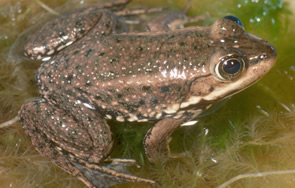
Rana virgatipes
Photo by RW Van Devender
Description: The carpenter frog looks somewhat like a small bullfrog but may be distinguished by the presence of four buff, reddish-brown or yellowish-brown stripes — two on the back and one on each side — on a mottled greenish or brownish background. It has dark stripes on the rear of each thigh and usually dark mottling on its belly and sides. It does not have ridges running along its sides like many other members of the family.
Habitats and Habits: Found in the Coastal Plain, carpenter frogs are more often heard than seen. They are among our most aquatic frogs, seldom venturing far from water. Habitats include pine savanna ponds, bogs, beaver swamps, Carolina bays, seeps, pocosins (shrub bogs) and ditches. They are found most often in tea-colored, relatively acidic waters with abundant Sphagnum or other vegetation and are sometimes called “sphagnum frogs.”
Several hundred eggs are deposited in a flattened cluster. The tadpoles take about a year to transform and are highly acid-tolerant. Larger tadpoles have a distinct dotted or dashed line in their dorsal tail fins and may also have tiny, scattered black dots like those of bullfrogs.
Call: Carpenter frogs can be heard calling in late winter, spring and summer. Their common name refers to their call, an explosive “pa-tank!” or “clack-it!” repeated several times in succession, resembling a carpenter’s hammer.
Frog Fact: Male carpenter frogs are highly territorial and defend their territories from other males using physical interactions (wrestling) and vocalizations.
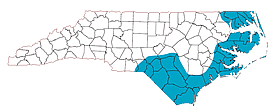
The shaded region represents the range of the carpenter frog in North Carolina.
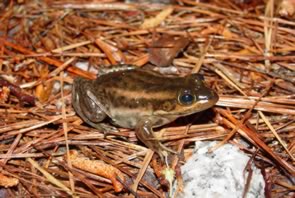
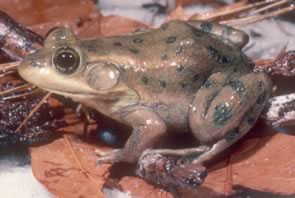
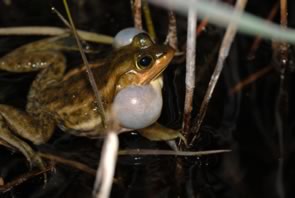
Photo by RW Van Devender
A carpenter frog calling.
Photo by Tom Luhring
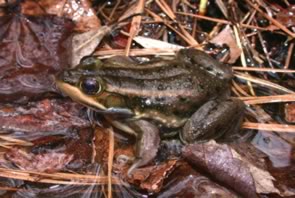
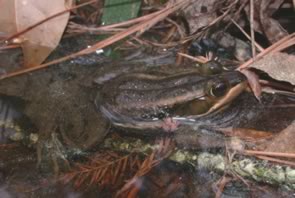
Photo by JD Willson
This website created by: Grant Connette and Evan Eskew.
For comments or questions contact M. Dorcas: midorcas@davidson.edu.
M. Dorcas homepage: http://bio.davidson.edu/dorcas
Davidson College, Davidson, North Carolina 28035-1719.
Text and maps from: Dorcas, M. E., S. J. Price, J. C Beane, and S. S. Cross. 2007. The Frogs and Toads of North Carolina. North Carolina Wildlife Resources Commission, Raleigh, NC. – Copyright by Michael E. Dorcas
Partial Funding for this website provided by a Associate Colleges of the South, National Science Foundation, and Duke Energy.
